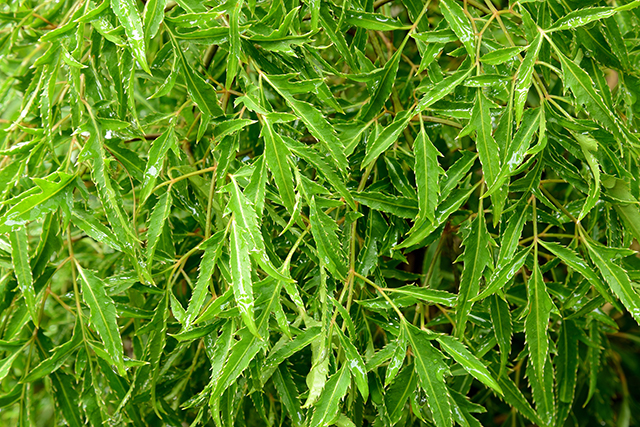
Asthma is a well-understood disease with established first-line treatment drugs. However, not everyone can afford the expensive conventional medications used to manage its severe symptoms.
Patients in underdeveloped counties like Ghana are in need of affordable alternatives or adjuncts for managing their disease. Their requirements have driven researchers from the University of Cape Coast (UCC) and other academies to examine medicinal plants that were used in folk medicine to treat symptoms similar to the disease.
Ming aralia is one of the unrelated plants that carry the moniker "tea tree." It is also one of the most important remedies for asthma in Ghanaian folk medicine.
Earlier studies have ascertained its anti-inflammatory properties as well as its safety for human use. The ethanol extract derived from its leaves contains natural compounds that help prevent inflammation.
In addition to controlling inflammation, studies reported that ming aralia relieves pain, neutralizes toxins, kills deadly mollusks and pathogenic bacteria, and serves as a diuretic. (Related: Medicinal mushroom found to be an effective natural treatment for bronchial asthma.)
Testing the broncho-protective properties of ming aralia extract
The UCC researchers chose to evaluate the asthma-managing ability of an ethanol extract made from the leaves of the Ming aralia. Furthermore, they also wanted to determine the means by which it affected the pathogenesis of asthma.
To this end, they set up in vivo and in vitro animal models using guinea pigs. Then they processed ming aralia leaves to create the plant extract.
Each group of animals was pre-treated with different doses of the extract. Then they were exposed to the aerosol form of either acetylcholine or histamine, two substances that induce bronchoconstriction.
The researchers took note of the time it took for the animal to begin experiencing problems with breathing after it was exposed to the aerosol. They also kept track of how long it took for the animals to recover once the latter were placed in fresh air.
Further tests determined how the Ming aralia extract affects agonists such as acetylcholine and histamine. The extract was also compared to atropine and mepyramine.
Lastly, cytological and histological tests were conducted to determine how the extract affects mast cells. These are responsible for releasing agonists like histamines during inflammatory and allergic reactions.
A natural equivalent to antihistamines
The results of their tests showed that it took more time for pre-convulsive dyspnea to set into guinea pigs that were pre-treated with the Ming aralia extract. The treated animals also made faster recoveries compared to normal untreated counterparts.
This greater resistance to – and faster recovery from – bronchoconstriction applied to both acetylcholine and histamine. Similar results were achieved with prednisolone, an anti-allergy and anti-inflammatory drug, meaning the extract has the same effectiveness against asthma symptoms as a first line drug.
The tests performed on isolated guinea pig ileum determined that the extract achieved its anti-asthma effects through an anti-histaminic approach rather than an anti-muscarinic one. It appears to prevent the contractions by blocking a receptor associated with histamine.
Furthermore, the extract can stabilize mast cells, preventing them from releasing their cargo of inflammatory chemicals. When combined with its established anti-asthmatic and antihistaminic activities, it shows all of the hallmarks of proper asthma treatment.
The researchers conclude that the ethanol leaf extract of ming aralia should be further explored as an alternative or adjunct to conventional asthma management.
Visit NaturalMedicine.news for more articles about natural anti-asthma medicines like ming aralia.
Sources include:
Please contact us for more information.






















